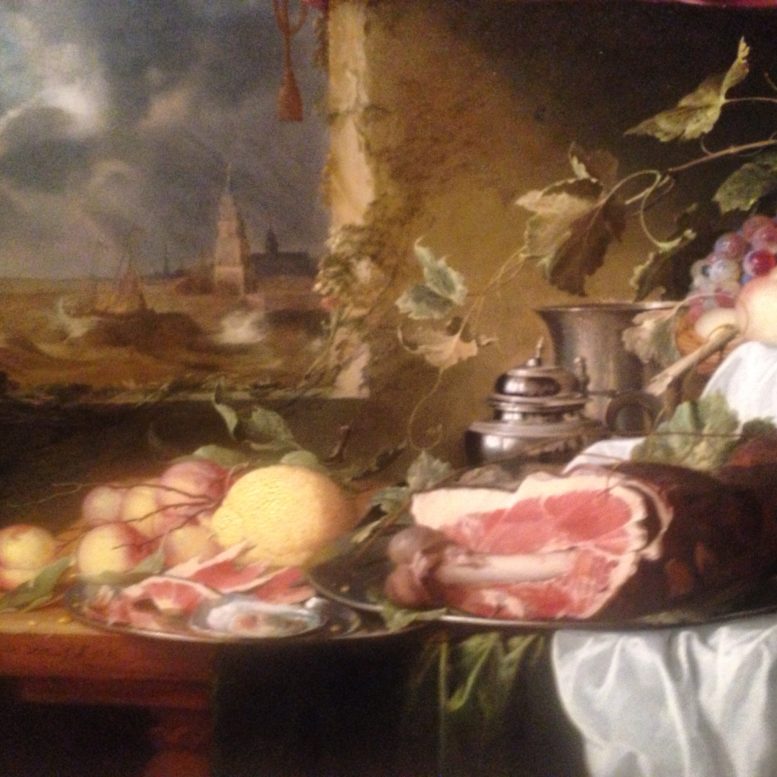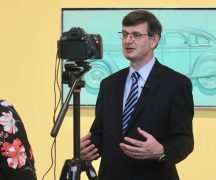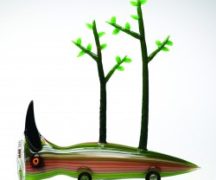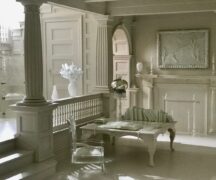By DAVID DUPONT
BG Independent News
As the gaiety of Christmas Day fades, and we enter that phase of holiday denouement, the Toledo Museum of Art throws it doors open to welcome visitors with a whole slate of activities leading up to New Year’s Day. Now that the gifts are unwrapped and the meals eaten, a visit to the museum is in order. It’s a great place to take out of town visitors, and share with them one of the treasures of Northwest Ohio. For those locals who have never visited, it’s a great time to acquaint them with this grand institution. The museum has a wonderful holiday feel, and it tends to attract enough people to give it a warm social buzz, without being hectic.
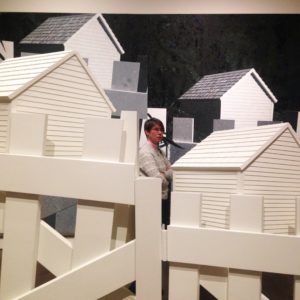
“Fence” Jennifer Bartlett
There’s more to do than look. There’s a full schedule of activities from life drawing to game playing for all ages. (See http://bgindependentmedia.org/toledo-museum-offers-great-art-escape-over-holidays/)
For the past few years, my wife and I have gone to the museum on New Year’s Day.
Museums are just one of those spaces – along with baseball parks and libraries – where all I have to do is step inside and my spirits are lifted. That’s true whether it’s the first time I visit, or the Toledo Museum, a place that by now almost feels like home.
I started going to museums when I was in college. I was a student at UMass in Amherst, but took lessons from a jazz trombonist at Berklee College of Music in Boston, a two-or-more-hour bus ride away. It seemed a shame just to go to the lesson and head home, so I’d go to the Museum of Fine Arts. I even had a student membership. It was convenient, only a few blocks from Berklee, and I could check my horn and satchel of music, which usually by that time also had a few newly purchased jazz albums. I’d spend a couple hours, just wandering the galleries, fixating on one or two at each visit. I’ve loved museums ever since.
What’s the attraction?
- Museums plunge you into the texture of your times. Yes there are celebrations of kings and warriors, historic and mythological. There are also celebrations of common folks, who operate windmills, fight in wars, haul goods and grow food. And the paintings can evoke the particular weather of a day hundreds of years ago, and the rhythm of life—the dock workers at early morning, the harvesters at midday, the diners in the evening.
- On repeat visits, these folks become like old friends, greeting you around each corner. There’s the tourists and their bored tour guide in Tissot’s “London Visitors,” the woman washing clothes near Francois Boucher’s “The Mill at Charenton” or the figures in Marisol’s “The Party.” This year we can greet the museum’s newest permanent resident Jaume Plensa’s “Paula” who in just a few short months has become a fixture outside the museum’s main entrance.
-
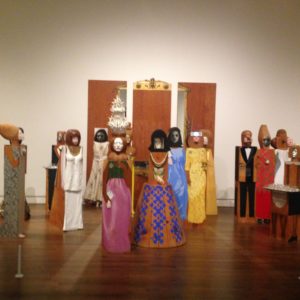
“The Party” by Marisol
I always meet someone I know at the museum, but more than that I enjoy the congenial company of strangers. The museum draws all sorts, young and old, visitors from far and visitors from the neighborhood. The Toledo Museum under Director Brian Kennedy has increased its efforts to open itself up to the community. Last summer’s block party was a stellar example. And its tradition of being open free of charge is an enduring symbol dating back to its founding.
- There’s always something new. Though the museum doesn’t have a major featured exhibit currently after a busy year featuring among others the birds of Fred Tomaselli, Plensa’s sculptures inside and out, and oddly prophetic exhibit on political advertising “I Approve This Message.” Still I’ve yet to see the Gabriel Dawe’s fabric installation “Plexus no.5.” Described as “ethereal indoor rainbows” Dawe’s fabric installations are designed for the specific space. The work is in Toledo Great Gallery communing with the gods, saints, sinners and common folks created by the Great Masters. Also on exhibit are the Libby Dolls which were created and sold as part of the relief efforts after World War I. The museum’s founder Edward Drummond Libbey bought the largest collection in 1917.
- Museums are about more than visual art. Each day during the Great Art Escape a performance is scheduled, and throughout the week, organists come in and play the Dutch pump organ. Last New Year’s Day we heard music by Beethoven and others written for musical clocks. It’s what they did to pay the bills, I guess.
- The museum takes visitors around the globe and to worlds that only exist in the imagination. History and myth take physical form. The inner workings of artists’ minds are exposed. The inner lives of ancestors reveals. And the visitor gets exercise while taking these journeys, strolling the galleries.
- One of the improvements museums have made in the 40 years since I started going have been the upgrading of dining facilities (and even more dramatically, their gift shops). It used to be all they had was little more than a cafeteria. The TMA offers a cozy, well-lit cafe in which you can get sandwiches and light entrees as well as beer and wine. It’s a comfortable place to sit and contemplate the year ahead, which will undoubtedly involve more trips to the museum.

